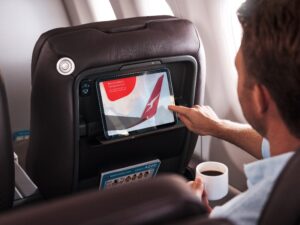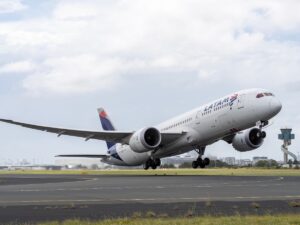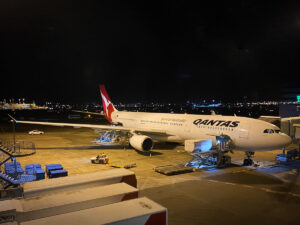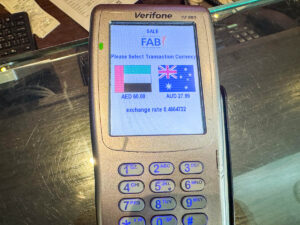
Within the airline industry, a fare class is a letter such as J, Y or Q that is used to identify a particular airfare type. Known to travel agents as Revenue Booking Designators (RBDs), they’re also sometimes called fare buckets or fare basis codes.
When you book a flight, your fare class is important because it determines the price, conditions and flexibility of your ticket. It also determines whether you’ll be able to upgrade and the number of points & status credits earned.
On any given flight, there may be up to four cabin classes sold – First, Business, Premium Economy and Economy. But there are often over a dozen different fare classes available for sale. Each fare class represents a ticket at a certain price point, for travel in any given class of service.
Revenue Booking Designators are used by airlines as a revenue management tool to control the amount and price of seats available for sale on a given flight.
On flights where demand is low, the airline will typically open up all fare classes for sale. But the number of seats in each fare basis code will be limited, and airlines will remove the cheaper seats from the available inventory once the number of seats allocated for sale at each price point are sold out. That’s why flights become gradually more expensive closer to the date of departure, as more seats are booked.
The lowest fare classes are typically discounted sale fares. These fares are generally inflexible, earn fewer frequent flyer points and cannot be upgraded. This is intentional as it allows airlines to sell more expensive fares to travellers who require extra flexibility or want the opportunity to upgrade their ticket.
Using Expert Flyer to check flight availability
You can use ExpertFlyer to see how many seats are available for sale in each fare class on any given flight. This can be handy if you are planning to request an upgrade, as it can help you to determine how full the flight is likely to be.
Expert Flyer is a subscription-based service. If you don’t have an account, you can request the loadings for a specific flight on AFF’s Flight Availability/Loadings & Upgrade Probability Help Desk thread.
Here are two examples of fare class availability on two different Qantas Airbus A380 flights from Melbourne to Singapore:

The actual letters designated to each fare bucket varies by airline. Qantas uses the following fare class codes for seats in each of its cabin classes (in order from most expensive to least expensive):
- First: F to A
- Business: J to I
- Premium Economy: W to T
- Economy: Y to E
Qantas also designates the following codes for frequent flyer redemption seats:
- First: P
- Business: U
- Premium Economy: Z
- Economy: X
There is a full list of Qantas class types on the Qantas website.

Virgin Australia also publishes a list of its fare brands and associated class codes on its website.
In the above example with the two Qantas flights, Flight #1 still has many seats available in all fare classes and even some award availability in First, Premium Economy and Economy. On the other hand, Flight #2 is sold out in First & Business and has only one Premium Economy left for sale at the full “W” fare price. That flight will probably depart full and there is almost no chance of getting an upgrade.
Why your fare class matters
There are several reasons why knowing your fare category is important!
Firstly, it determines the amount of frequent flyer points and status credits you’ll earn for your flight.
In general, more expensive airfares earn more points. But on the other end of the spectrum, some fare classes may not earn any points! This is especially the case if you’re crediting to a partner airline’s frequent flyer program.
Here are some examples of booking classes that don’t earn any points:
- Some Malaysia Airlines, Qatar Airways and Cathay Pacific Economy fare classes do not earn any Qantas points or status credits
- Qantas “E” class tickets do not earn any miles when crediting to most partner airline frequent flyer programs including American Airlines AAdvantage, British Airways Executive Club and Alaska Airlines Mileage Plan
- Malaysia Airlines Business and First class fares earn Qantas points & status credits at the much lower “Flexible Economy” rate
An easy way to check how many points you’ll earn with each fare class is to use the Where to Credit website.
Some fare classes also cannot be upgraded using frequent flyer points. If it is eligible for an upgrade, your ticket type may also determine how many points are required.
For example, on Qantas international Economy tickets:
- Classic Flight Rewards (X class) can be upgraded but upgrades cost the highest amount of points
- Sale fares (E, N, O and Q) cannot be upgraded
- Saver fares (G, K, L, M, S and V) can be upgraded but at a higher cost than with Flex fares
- Flex fares (B, H and Y) can be upgraded and upgrades cost fewer points
How to find your fare class when booking online
Most airlines display the fare class on their website at the time of booking.
In this example from the Singapore Airlines website, you can easily see that you’re booking a “W” fare:

Or in this example from the Qatar Airways website, the ticket is clearly booking into “B” class:

Annoyingly, Qantas is one of few airlines not to show the fare bucket prior to booking on their website. But you can see the fare class after making a booking within the “manage booking” portal.

The fare class is always shown when searching for fares on the excellent ITA Matrix tool. (In the example below, the Cathay Pacific “O” class fare does not earn Qantas points!)

If booking with a travel agent, your agent should be able to advise which type of fare is being used and the rules associated with that.
You can discuss this article on the Australian Frequent Flyer forum.

















































































1 reply
Loading new replies...
Join the full discussion at the Australian Frequent Flyer →